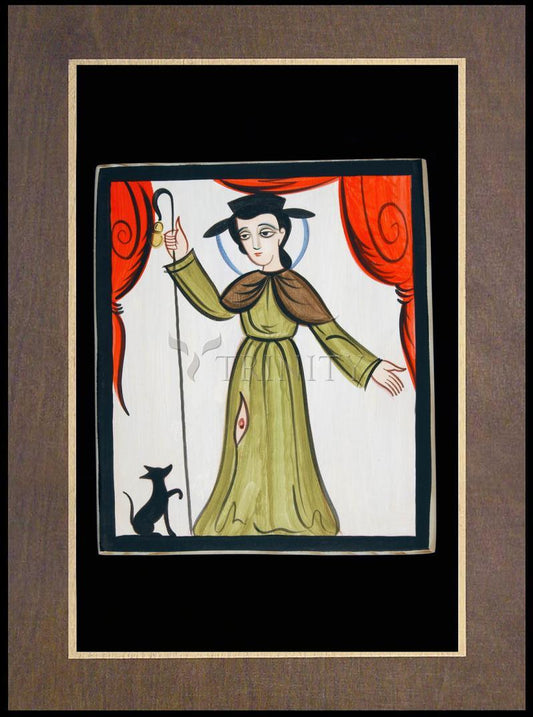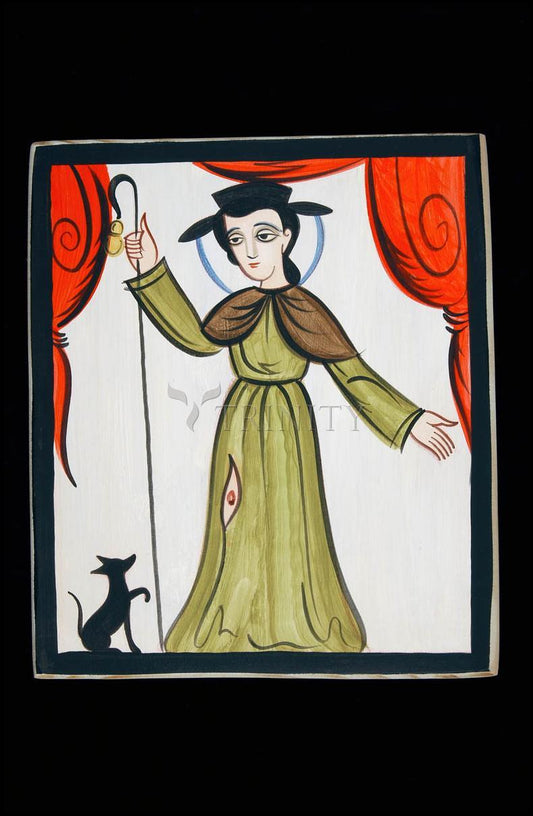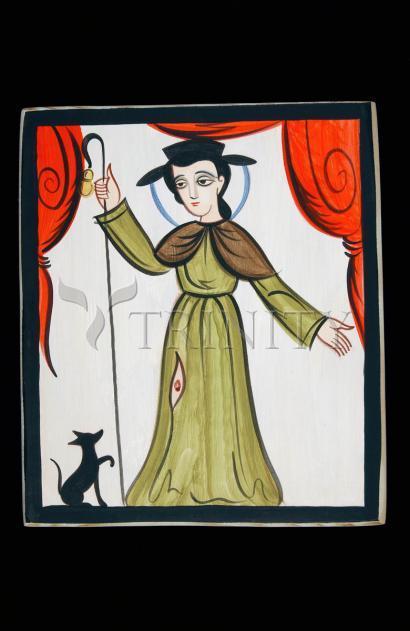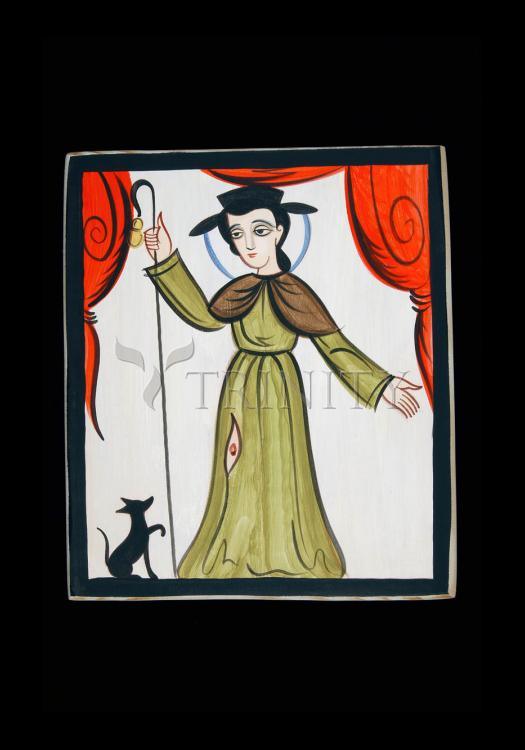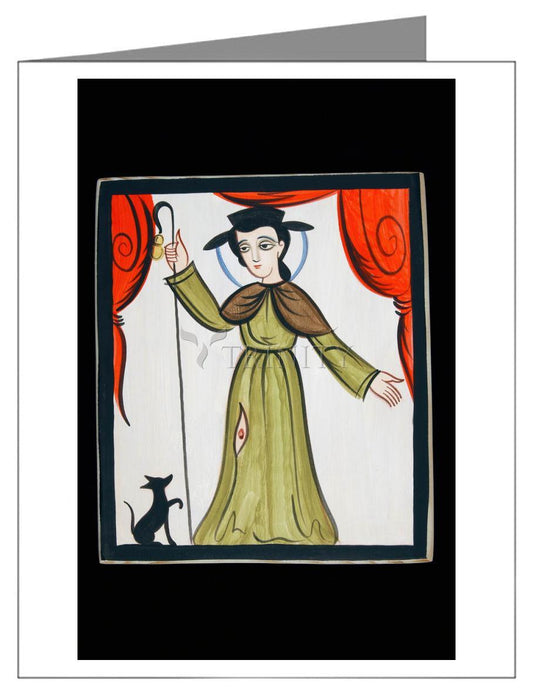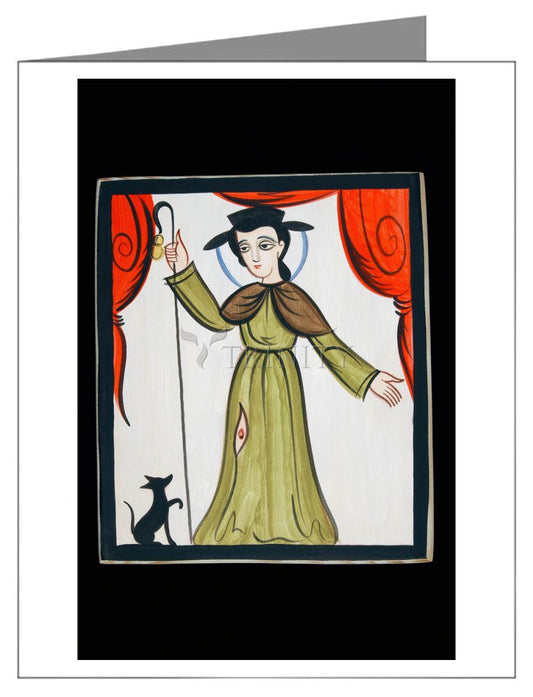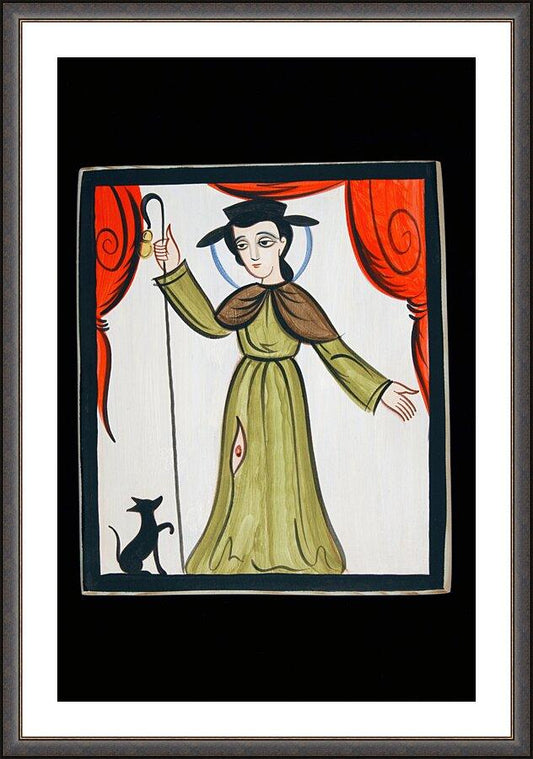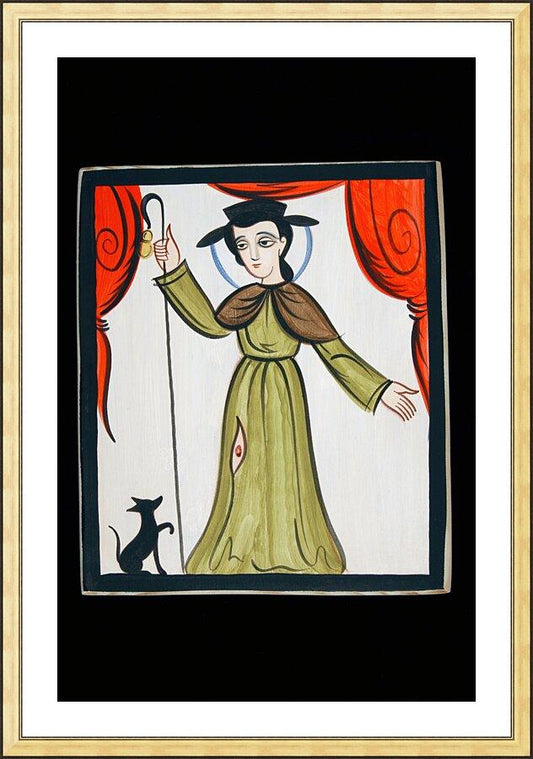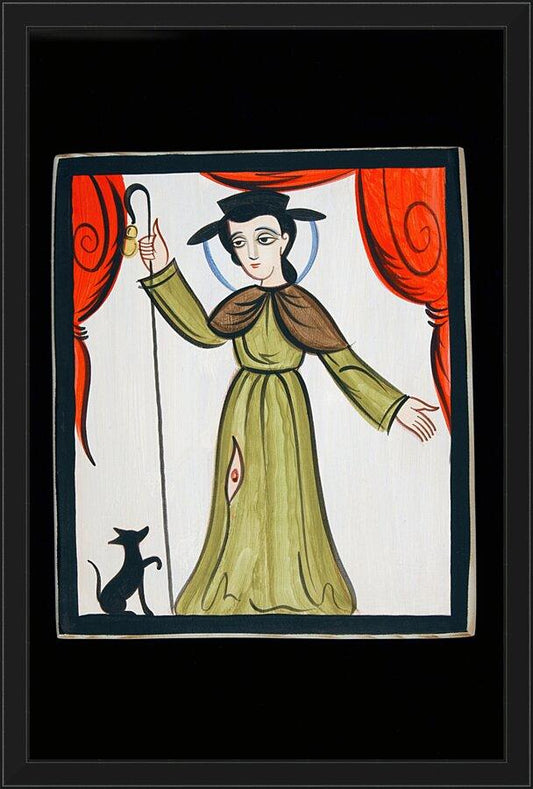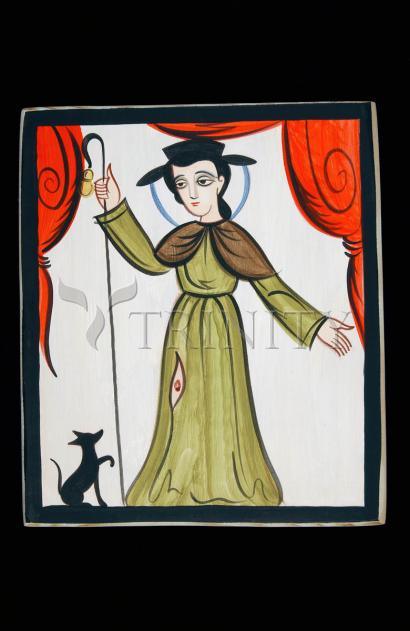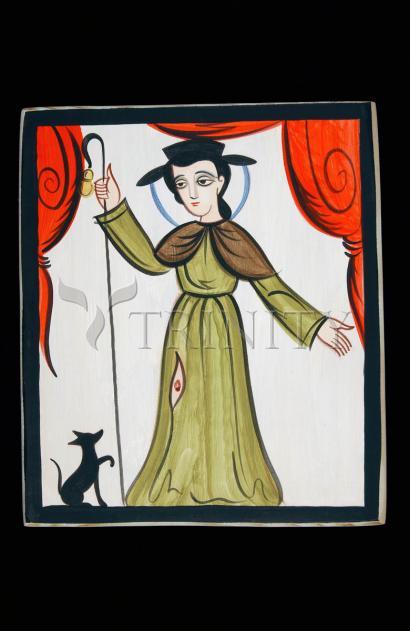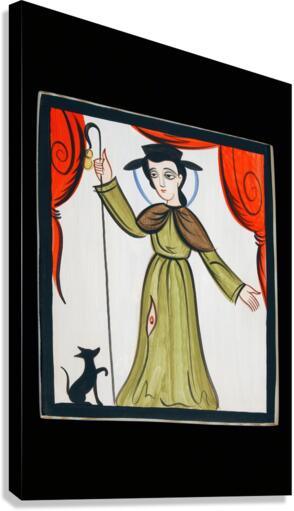Saint Rocco was born of noble parentage about 1340 A.D. in Montpellier, France. At birth it was noted that he had a red cross-shaped birthmark on the left side of his chest. As a young child, San Rocco showed great devotion to God and the Blessed mother. At an early age, his parents died leaving him an orphan under the care of his uncle, the Duke of Montpellier. Soon after, San Rocco distributed his wealth among the poor and took a vow of poverty.
San Rocco dressed in the clothes of a pilgrim and departed for Rome. At that time, Italy was stricken with a rampant disease. San Rocco cured many of this dreaded disease by praying for them and making the sign of the cross.
During his travels, he too contracted the plague which was evident by an open sore on his leg. Rocco was banished from the city and took refuge in a cave. Here he slept on leaves and drank water from a small stream. Miraculously a dog that refused to eat, faithfully brought him bread as a means of sustenance. The dog used to leave a nearby castle and the Lord of this castle having a curious nature followed this dog into the woods and discovered Rocco. The nobleman had pity on Rocco and brought him to his castle where Rocco was cured.
San Rocco traveled through northern Italy for two or three more years before returning to his birthplace in France. So weak and sick from suffering, the townspeople did not recognize him and he was thrown into jail as a spy without any proof. But yet he was kept in prison for five years. On August 16, 1378, a guard entered his cell and found San Rocco near death. The dungeon was illuminated with a blue light radiating from his body. Upon hearing this, the Governor demanded to know San Rocco's identity. San Rocco faintly replied, I am your nephew Rocco. Only one thing could prove that, so he had him disrobed and the red cross-like mark was visible on the left side of his chest. The Governor and the townspeople present in the cell then believed. A voice from paradise was heard announcing that San Rocco's soul had merited immortal glory in Heaven. Even after his death, San Rocco performed many miracles.
Saint Rocco is venerated in the Roman Catholic Church as the protector against the plague and all contagious diseases. The statue of Saint Rocco is considered unique among theologians because of his pose. It is most unusual because it depicts him with his left hand pointing to an open sore on his left leg. Few images of saints expose any afflictions or handicaps. His body is enclosed in a glass tomb in the church of San Rocco in Venice, Italy. We commemorate the death of this great follower of Christ on August 16th of each year.
Saint Rocco cared for the sick with great affection and gentleness. He also had great skill, no doubt acquired at the famous school of medicine at Montpellier: with his lancet, he removed tumors from those stricken with the plague and cleaned out their oozing sores. He comforted and consoled, tracing the sign of the cross on the foreheads of the suffering.
At his touch, the sick were often healed. They were healed so often that people told each other about it and recognized in Rocco God's goodness come to help them. Our saint had the gift of healing, a particularly useful and beneficial gift at this time when medicine was still powerless in the face of epidemics. But his holiness is measured not so much by the number of cures, as by the strength of his love of neighbor: the pilgrim Rocco first and foremost loved his suffering brothers and sisters, even to the point of heroism"
Born: 1295 at Montpelier, France
Died: 1327 at Montpelier or Angleria, France
Also known as: Rock; Rocco; Rollox; Roque; Rochus
"Excerpts from the Aliquippa San Rocco Cultural Committee



